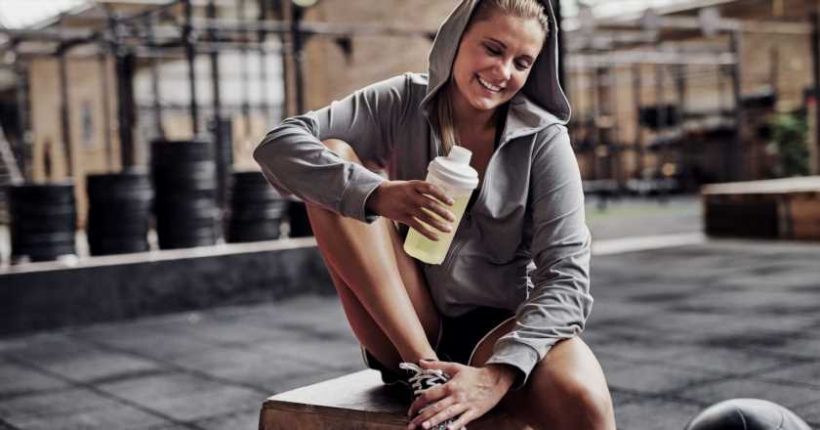https://queenanfamilymedicine.com/top/albendazole-albenza-buy/
Hold on to your baggy hoodie strings – fitness influencers and gym bros are coming for our oversized layers. It’s time, Jennifer Medlicott argues, to put a stop to the “pump cover” co-option of our favourite gym clothes.
The fitness community loves a buzzword, and the latest gym lingo to sweep the internet is “pump cover”. It’s a really basic concept: a pump cover is simply the oversized T-shirt or hoodie you wear to the gym. “So what? I’ve been wearing oversized hoodies since 1998,” I hear you muttering.
But pump covers don’t refer to any old T-shirt. If you look up the term on social media, you’ll come across videos of people working out in an oversized layer until they’ve warmed up enough to achieve a visible “pump” (eg swollen biceps, abs or quads), after which they’ll reveal their body in a flourish. It’s all about keeping your body under wraps until you can do the big unveiling.
You may also like
Struggling with low body confidence? Go for a walk in nature – it’s been proven to help
And crucially, pump covers are only really reserved for those who have a ripped body. Take a baggy T-shirt off to reveal a sweaty, regular torso and you’re just someone who’s got a bit too sticky in the gym. But whip that top layer off to give some air to a six-pack or bubble butt and you’ve got yourself a pump.
Now, we know this might sound like a harmless if not slightly ridiculous trend to pick up on, but think about it. Pump covers thrive off the idea that only the most athletic bodies should be on show. And, even more worryingly, if you’re ripped, you still need to flog yourself at the gym before you can get away with baring your muscles.
As if the video element of these posts wasn’t enough, they tend to be accompanied by jokey commentaries about how the person in the video feels judged in the gym or doesn’t feel like they belong there until they can reveal their athletic physique. They might have over-the-top inspirational soundtracks or voiceovers talking about powering through to the point of pay-off (taking off the top).
What does this trend say about the people whose bodies aren’t conventionally athletic? Does that mean they’ll continue to be judged or that they should feel they don’t belong?
Should those of us who don’t have rippling abs stay away from using oversized clothing to layer at the gym? For me, pump covers suggest that differently bodied people are better off trying to blend into the background until they’ve achieved a body that’s deemed acceptable for public display.
Finding the confidence to go to the gym is already a challenging enough experience, so anything that suggests certain bodies should be covered up is hardly helpful. And that’s compounded by the fact that, for many, embracing gym fashion has been a key part of developing confidence in the gym and has helped people to feel empowered to show off their bodies.
“I saw the gym as a place where fat people should be ashamed and hide,” says Vic, 47. “In my daily life, I wear bright clothes and am vibrant, but I’d go to the gym in my darkest, baggiest clothes because I didn’t feel I was “allowed” to do anything else. Lots of larger-sized clothing is ‘muted’ in terms of colour and that reinforced the idea in my head.”
Before her revolutionary encounter with gym fashion at size 18, Vic “felt you had to be slim [to attend the gym] – it wasn’t anything to do with health or strength (which is what I focus on now) – it was purely appearance-based.”
But after discovering a vibrant, lamé sportswear brand that was size-inclusive, Vic’s attitude changed for the better and so did her confidence. “After thinking I had to be drab and gloomy, it was a revelation. When you look awesome before you get to the gym, it’s hard not to feel awesome when you’re working out.”
Similarly, 22-year-old Amy shares how these harmful narratives have affected her in the past: “I was terrified of not looking the part a few years ago. I’ve always been insecure about carrying fat on my arms, so I’d wear long sleeves and jumpers even if I got really hot.” But now, after learning more about the gym and feeling more comfortable in its environment, she’ll “happily wear sports bras and shorts”.
Meanwhile, wellbeing coach and yoga teacher Donna has expressed concern that such trends could “lead to an increase in body image issues”. Although Donna has worried about not looking the part in the gym in the past, she overcame this fear: “I realised that my body is so much more than how it looks.” And since she’s recognised the importance the gym fashion industry plays in challenging toxic gym discourse, she says that “the availability of gym outfits that are size inclusive is something that has helped [my clients’] confidence”.
You may also like
Cardio vs weights: “Strength training has changed how I view my body image, mental health and exercise goals”
It’s easy to see how someone might feel ashamed of their body or that they need to cover up in the gym when the gym clothing you like isn’t stocked in your size. Fortunately, the fitness fashion industry seems to be growing better each year, especially with more options for size-inclusive outfits. It’s now the overall gym culture that’s lagging behind.
There’s nothing inherently wrong with wanting to show off your gains in the gym, but trends like the pump cover only go to heighten an already pretty toxic gym environment. It’s time to pop the pump and reclaim baggy T-shirts for what they’ve always been: a cheap, comfy option for covering up buckets of sweat.
For more fitness news and ideas, visit the Strong Women Training Club.
Images: Getty
Source: Read Full Article
